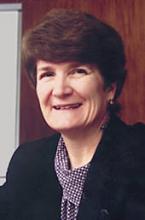Even if parents have not consulted you in choosing to adopt a child, there is a great deal to know and do in supporting these special families over time. Issues about adoption vary by the age of the child and any special circumstances, but there are universal recommendations as well.
You may be surprised to know that not every adoption agency adequately prepares parents. You can provide more comprehensive counseling and help even well prepared families address issues as they invariably arise over time.
Every adopted child, from the beginning, should be told they have both adoptive parents and biological parents. They will all find out eventually – and a failure to disclose this information can severely harm the parent-child relationship. The adoption may be more obvious for the 13% of children adopted from a different culture. Even though many will not ask questions until they are 5 or 6 years old, honesty from the start is best.
It is critical to instill a profound sense of “forever.” Somewhere inside, parents or stepparents might think they’re agreeing to care for an adopted child only until age 18. However, a child once given up might constantly monitor for any doubts about permanency. Repeated promises of forever are very powerful for adopted children, especially those 7 years or older.
Intra-family adoption is by far the most common scenario. But just because the child knows these relatives does not mean adoption is easy for them or their family members. Several grandparents among my patients clearly had to first go through a process of shame, guilt, anger, and grieving about the failure of their own child to be a successful parent before they could resolve to adopt their grandchild.
It can be very positive when a stepparent adopts the biological child of their partner or spouse. This shows their commitment to take full responsibility even if the marriage breaks up, but it also is done for legal reasons.
Intra-family adoptions have the advantage of fewer mysteries. The relatives already know a lot about the child, their behavior, and medical history, in contrast to children adopted from outside a family.
At least 45% of children adopted out of foster care, for example, come with emotional problems. Nearly one-quarter (23%) of younger foster children have developmental delays as well.
Parents may be unaware of a traumatic history or special needs, especially if they adopt an infant. Be sure to educate adopting parents about signs of trauma because such a history is so much more likely in a child who has come up for adoption. Changes in eating, sleeping, toileting, or crying can all be signs of a traumatic past. For example, babies and toddlers may refuse to eat or hold foods in their mouth.
Others might gorge to the point of vomiting. It’s important that these adopted children be allowed to have all they want to eat to reassure them in this basic way. If the parent ungrudgingly provides unlimited food, this behavior is unlikely to persist for long.
Some adopted toddlers and some school-age kids hide food as well – in their mouths, under their pillows, or in their dresser drawers. Instruct parents not to treat this as misbehavior, rather, this might be the child’s reaction to past food insecurity or may reflect an overall sense that the world cannot be counted on.
Excessive crying and disrupted sleep are other common signs of distress and anxiety. I recommend that parents who adopt young children sleep next to them. Safe co-sleeping helps them to get to know the baby and helps the baby to feel secure. Older children also may benefit from sleeping with parents or siblings for reassurance as well.
Toddlers and young children who have been adopted are more likely to fear separations. One of my favorite books for young children with such fears is “Runaway Bunny.” Everywhere a little bunny runs the mother bunny comes and gets him. The symbolism is not missed by adopted children.
Another book suitable for somewhat older children is “Love You Forever.” It’s not about adoption, but about a child growing up and staying in close touch with the parent throughout life. In the end, the parent is very old, and the child starts to take care of the parent, completing the circle.
Ironically, social promiscuity, the opposite of separation fear, is another behavior sometimes seen in adopted toddlers or young school-age children. They go to anybody, chat up strangers, and sit on laps of people they have just met. They don’t show the usual anxiety viewed as protective around strangers, and this really scares parents. Instruct parents not to criticize the child, but to teach him safety skills without scaring him.


